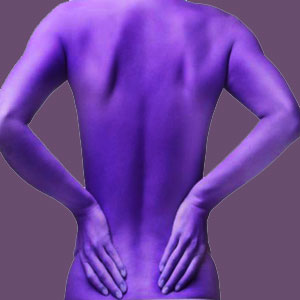
Piriformis pain in the elderly is very rare, only affecting a small percentage of seniors. The fact that more elderly people are not diagnosed with piriformis syndrome shines a glaring light on some common diagnostic blunders committed in the piriformis treatment industry. These errors usually relate to the idea that age and the results of accumulated injury are the most common causes of piriformis pain, which apparently, they are not…
The elderly provide proof positive that many ideas about chronic pain are completely wrong. So many doctors blame the general effects of age, physical activity and structural degeneration for creating such a wide range of pathological conditions. However, these chronic pain conditions are most often observed in people aged 30 to 60 and many are often almost nonexistent in the elderly. We have been propagating the truth of this interesting fact for years and finally, more people are beginning to understand why much of what we are told as healthcare consumers is utterly wrong.
This essay examines the incidence of piriformis symptoms in senior citizens. We will discuss why the elderly might suffer piriformis pain, as well as why this age demographic provides proof positive that many theories of causation are inaccurate and based on speculation, rather than clinical actuality.
Incidence of Piriformis Pain in the Elderly
The elderly are one of the least often diagnosed demographics of piriformis pain patients. This can be explained using several lines of reasoning:
First, some elders might have their actual piriformis pain blamed on incidental structural abnormalities that are easier to diagnose (particularly with medical imaging). These conditions might consist of arthritis/deterioration of the hip joint, lumbar spinal issues or sacroiliac joint disorders. Given the incredible incidence of scapegoat conditions being blamed for pain, and the universality of structural degeneration in seniors, this idea is very plausible.
Second, since elders are often less active and might accept some degree of pain in the piriformis, many do not seek active diagnosis or treatment for symptoms that are not debilitating. This explanation is also plausible.
Third, elders are simply not as susceptible to piriformis pain due to a variety of factors including less physical activity, less strenuous forms of activity, the ability to retire and not work daily and the ability to grow past the age of financial responsibility that might create mindbody pain in younger, hyper-responsible people. This explanation is just as logical as those listed above.
Piriformis Pain in Senior Citizens
When seniors do suffer piriformis pain, it can be just as bad as in younger people. Just because the diagnosis is rare does not mean that piriformis syndrome does not exist in the senior age demographic, since it surely does. However, just as in other age categories, some senior patients might be misdiagnosed, while others might enjoy the benefit of accurate diagnostic pronouncements. Assuming an accurate diagnostic verdict, piriformis pain can cause functional limitation for some elders, including any or all of the following consequences:
Seniors might not be able to rest or recline comfortably, possibly causing them to suffer insomnia and general health deterioration.
Elders might not be able to perform necessary physical posture or activities such as standing, walking, exercising or even sitting comfortably.
Elders might seek medical care for their pain and might be subjected to dangerous pharmaceutical treatment or even potentially lethal surgical intervention in very rare cases.
Elders will likely suffer reduced enjoyment and participation in vocational, social and family activities (where applicable).
Piriformis Pain in the Elderly and Misdiagnosis
When discussing misdiagnosis of elderly piriformis syndrome, there are several profiles we would like to discuss:
First, we have scenarios detailed above where elders might actually be suffering from piriformis pain that has been mistakenly blamed on some other more common structural issue, such as degeneration of the hip joint, sacroiliac joint or lumbar spine. All of these conditions can produce pain that might be similar to piriformis syndrome.
Next, we have examples of piriformis syndrome that are positively identified in seniors, yet are incorrectly implicated. Some of these cases might involve structural deterioration of the lumbar spine, SI joint or hip as the true symptomatic mechanisms, while other might be mindbody pain syndromes. It is important to remember that although seniors are often less susceptible to psychogenic pain due to several factors, they can certainly still suffer these types of symptoms, so every precaution should be taken to identify mindbody expressions prior to considering any type of physical treatment.
Finally, the most important misdiagnosis-related point that we would like to make in this essay is in regards to the many cases of piriformis syndrome in younger people which are blamed on accumulated injury or structural degeneration. If these theories were correct, then one would assume that the elderly would be more susceptible to piriformis syndrome, than the reality of seniors rarely being diagnosed… Therefore, it gives enlightened care providers pause to consider that the theories commonly employed in the diagnosis of subjective soft tissue pain problems in younger patients might not be correct and should be applied only when evidence verifies the causative process of speculation.
Piriformis Pain > Causes of Piriformis Pain > Piriformis Pain in the Elderly





